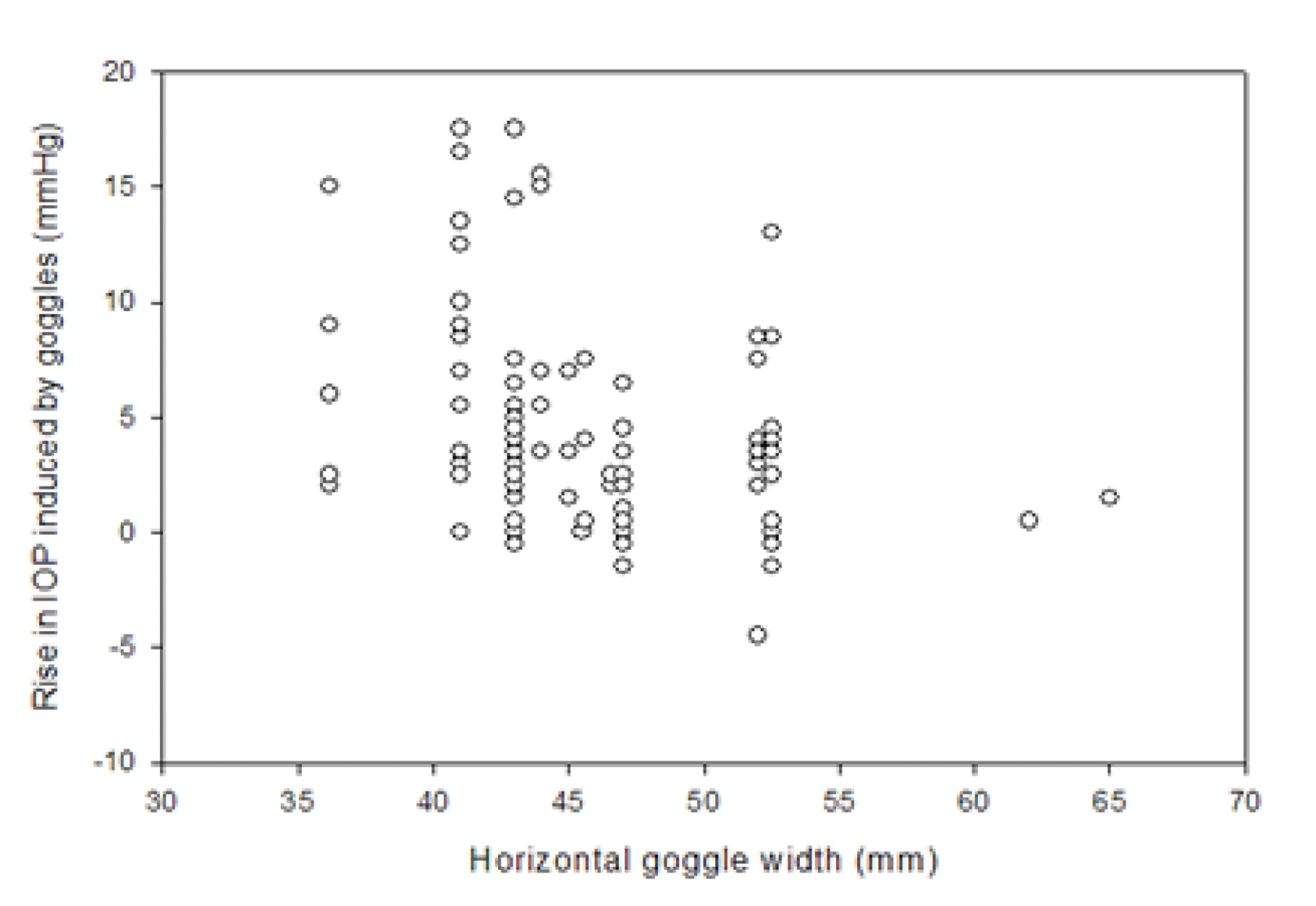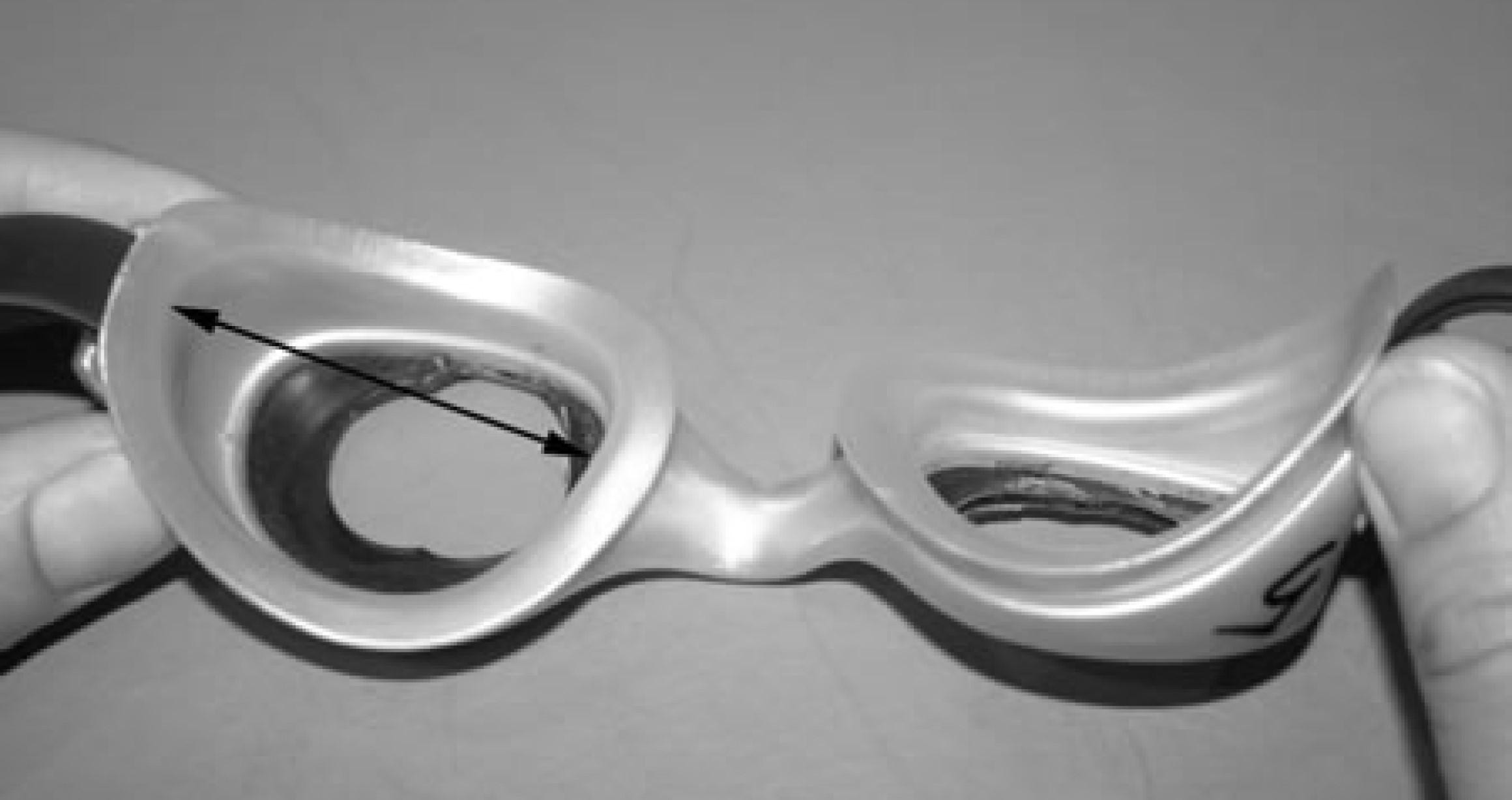Share
The Lions Eye Institute has been measuring the changes in eye pressure (intraocular pressure – IOP) when people wear swimming goggles.

This report briefly summarises the results of that work and gives the most up-to-date recommendations concerning the size and style of goggles that the researchers recommend in order to minimise the risk of inducing raised eye pressure, and hence minimising the risk of glaucoma worsening. Glaucoma’s principle risk factor is raised intraocular pressure, hence the concern when it was found that some swimming goggles elevate intraocular pressure.
The study looked at 15 swimmers who were of varying ages from 6 through to 55. They wore different sorts of swimming goggles of varying sizes and shapes (figure 1). In the experiment, 2 cm diameter holes were drilled through the transparent Perspex part of each goggle, in order to allow the measurement of IOP.
The smaller swimming goggles tended to cause the greater pressure rise in each eye, with one particular set of swimming goggles causing an average 9 mm mercury pressure rise. The average intraocular pressure is 15 mmHg in most people, so this represented a 67% increase in eye pressure, which was very significant. Some individuals experienced a rise in IOP of 17mmHg, i.e. a doubling in their IOP (see figure 2).
The goggle feature which appeared to be most significant, in terms of causing a pressure rise, was the horizontal width of each goggle. The horizontal width, by our definition, was the measurement between the rubber flange horizontally across each goggle (figure 3). That is, if you turn the goggles over and look at them from the back side, so that the rubber flange portion is pointing at you, get a ruler and measure from the internal aspect of one side of the rubber flange across to the internal aspect of the opposing rubber flange horizontally, that is in the horizontal plane, not the vertical plane. (The horizontal plane is normally the widest part of the goggle).
- Goggles which caused the greatest pressure rise had an internal horizontal width of 41 mm.
- Goggles with an internal horizontal width of 43 mm caused on average a 5 mm pressure rise, which is still very significant.
- Goggles with an internal horizontal width of 47 mm caused a rise of 2 mm, again a significant pressure rise.
- Goggles with 52 mm internal diameter did not cause any significant pressure rise in any of the subjects.
- Racing goggles, which are the hard plastic goggles with no rubber component, caused a pressure rise in several individuals, tending to be the younger women and girls. In men no pressure rise was recorded with the racing goggles.
In summary, it is recommended that children in particular should only wear swimming goggles with an internal horizontal width greater than 55 mm. Racing goggles appear safe in most men over the age of 20, however further research is probably required to clarify the safety of racing goggles. They may not be safe in women and children.
The large faced goggles with internal horizontal widths of greater than 60 mm induced no significant IOP rise. These particular goggles had no separation between left and right eye compartments. If you wish to be fully confident of your intraocular pressure safety, then these are the goggles to wear.





